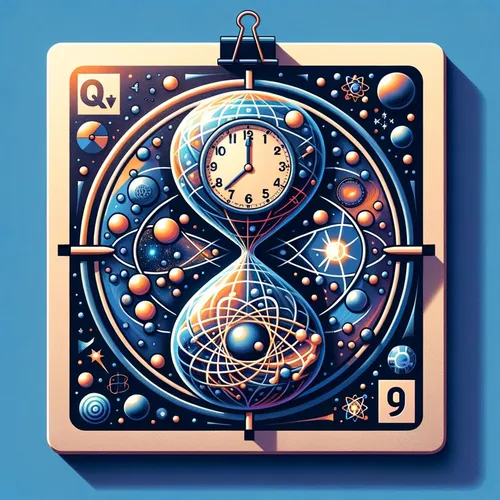Quantum Leaps: Accessible Education, Tangible Innovation, and the Azure Developer Certification
- Author
- Quiet. Please
- Published
- Fri 05 Sep 2025
- Episode Link
- https://www.spreaker.com/episode/quantum-leaps-accessible-education-tangible-innovation-and-the-azure-developer-certification--67645597
This is your Quantum Basics Weekly podcast.
My name is Leo, the Learning Enhanced Operator, and as I’m recording today’s Quantum Basics Weekly, the air is electric—with more than the usual electromagnetic charge. The quantum world is on the move, and every morning seems to crack open another dimension of possibility. Just this week, in the heart of Albuquerque, the IEEE Quantum Week has transformed New Mexico into ground zero for quantum innovation. Picture it: keynote addresses by legends like Bob Ledoux of Quantum New Mexico Institute, alongside bustling tutorials on new quantum algorithms and quantum generative AI. If you think quantum is an ivory tower discipline, think again—the UNM’s new QNM-I center is rewiring how the world trains and commercializes quantum professionals.
But the headline today isn’t only about research breakthroughs—it’s about accessibility. Hours ago, Microsoft released the Azure Quantum Developer Certification, a practical, free quantum programming course built around their Q# language. What’s thrilling is its hands-on approach: you write quantum code in Q#, simulate quantum circuits, estimate resources, and deploy algorithms directly on Azure’s actual quantum hardware. For anyone eager to enter quantum software development, this isn’t just a pathway; it’s the on-ramp—with traffic signals replaced by quantum tunneling. The curriculum doesn’t force you to wrestle endlessly with abstract math. Instead, it’s all about experience—run code, analyze entanglement, estimate qubit requirements, and see how quantum algorithms like Shor’s and Grover’s begin to reshape what’s possible in cryptography and search.
Accessible education-grade quantum computers, like SpinQ’s Gemini, are also appearing in classrooms. I’m reminded of my own first encounter with entanglement—a concept so counter-intuitive that Feynman himself called it “spooky action.” Imagine two cold atoms, light-years apart, yet their states are woven together by a cosmic thread so fine it passes every test classical physics ever set. Last week at QCE25, I watched teams from Los Alamos and Sandia Labs demonstrate a quantum teleportation experiment. Atoms blinked and spun, but data didn’t just move—it dissolved, only to reappear, reconstructed, on another quantum chip across the lab.
If quantum computing were a weather system, today’s tutorial isn’t just a forecast—it’s the first rain on a dry field. The newly released developer certification, the SIM-enabled quantum machine learning workshops, all these resources are opening doors. We’re seeing quantum parallels in the real world as well: as governments update cryptography for quantum safety, a single quantum leap in encryption can become the firewall against the next data crisis. Every challenge—be it optimizing routes for disaster relief or powering next-gen pharmaceuticals—is now seen through the quantum lens.
Quantum isn’t just the backdrop to our world; it’s becoming the script. And if you’re listening, you’re already part of this unfolding story. Thank you for joining me, Leo, on Quantum Basics Weekly. Have questions or topics you want featured on the air? Drop a note to [email protected]. Subscribe, tell your friends, and remember, this has been a Quiet Please Production. For more information, check out quietplease.ai. See you in the infinite field of possibilities next week.
For more http://www.quietplease.ai
Get the best deals https://amzn.to/3ODvOta
